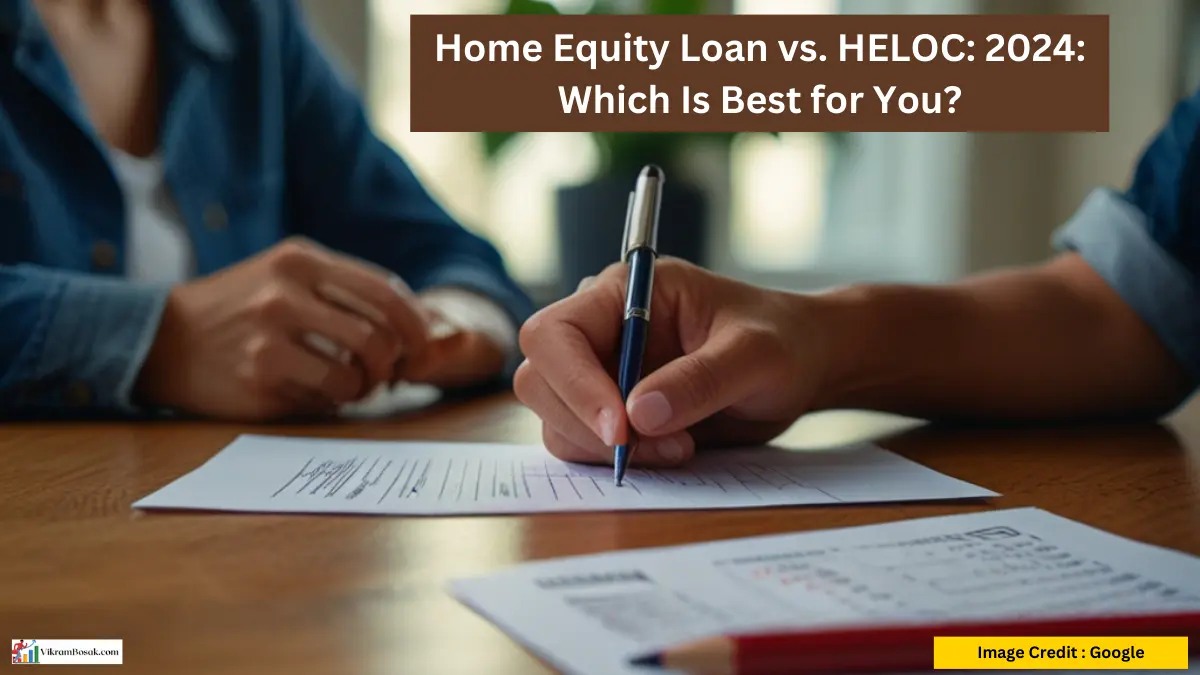Choosing between a home equity loan and a HELOC (Home Equity Line of Credit) can feel overwhelming. Both options tap into the equity you’ve built in your home to access funds, but they differ in crucial ways. Understanding these differences is key to selecting the right financial tool for your needs.
Fixed Rates vs. Variable Rates: Stability or Flexibility?
One of the most significant distinctions lies in interest rates. Home equity loans offer fixed interest rates, meaning the rate you lock in at origination remains constant throughout the loan term. Your monthly payments are now predictable and stable as a result.
In contrast, variable interest rates apply to HELOCs. These rates can fluctuate based on market conditions, potentially leading to higher or lower monthly payments over time. While this offers flexibility, it also introduces some uncertainty into your budget.
Here’s a table summarizing the key differences in interest rates:
| Feature | Home Equity Loan | HELOC |
|---|---|---|
| Interest Rate Type | Fixed | Variable |
| Predictability of Payments | High | Lower (but can fluctuate) |
Choosing the Right Rate:
- Fixed Rate (Home Equity Loan): Ideal if you prefer predictability and a stable budget. This option works well for financing a one-time expense with a known cost, such as a home renovation.
- Variable Rate (HELOC): A good choice if you anticipate needing funds over time or if you’re comfortable with potential payment fluctuations. HELOCs can be useful for ongoing projects or unexpected expenses.
Lump Sum vs. Line of Credit: Accessing Your Funds
Another crucial difference is how you access the money. Home equity loans provide a lump sum payment upfront after closing. You receive the entire loan amount at once, similar to a traditional mortgage.
HELOCs function more like a credit card. A credit line with a maximum borrowing limit is given to you. You can then draw funds from the line of credit as needed, up to the limit. You only pay interest on the amount you borrow, potentially reducing your initial monthly payments compared to a home equity loan.
Here’s a table summarizing the key differences in accessing funds:
| Feature | Home Equity Loan | HELOC |
|---|---|---|
| Access to Funds | Lump Sum Payment | Line of Credit |
| Draw Period (HELOC Only) | Typically, 10 years | |
| Repayment Period (HELOC Only) | Typically, 15-20 years |
Choosing the Right Access Method:
- Lump Sum (Home Equity Loan): This option is suitable if you have a defined project or expense and know exactly how much money you need upfront.
- Line of Credit (HELOC): A good choice if you’re unsure of the exact amount you’ll need or if you anticipate ongoing expenses. The flexibility of a HELOC allows you to access funds as needed.
Weighing the Pros and Cons: A Quick Guide
Here’s a simplified comparison of the pros and cons of home equity loans and HELOCs:
| Feature | Home Equity Loan | HELOC |
|---|---|---|
| Interest Rates | Fixed | Variable |
| Payment Predictability | High | Lower (but can fluctuate) |
| Access to Funds | Lump Sum | Line of Credit |
| Flexibility | Limited | High |
| Good for | Defined expenses, debt consolidation | Ongoing expenses, unexpected needs |
Remember: This is a general comparison, and specific terms can vary depending on the lender. Always compare loan options and interest rates from multiple lenders before making a decision.
Considering a home equity loan or HELOC? Consulting with a financial advisor can help you determine the best option for your unique financial situation and goals.
1. Home Equity Loan vs. HELOC.
Home Equity Loan: Like a regular loan, you get a lump sum of cash upfront with a fixed interest rate and a set repayment term. Throughout the loan term, your monthly payment remains constant. This is good for projects with a fixed cost, like a home renovation.
HELOC: Works more like a credit card. You get a credit line approved for a certain amount, and you can withdraw money as needed over a draw period (usually 10 years). Only the amount borrowed is subject to interest charges. This is ideal if you need ongoing access to funds for unexpected expenses or ongoing projects.
2. Is a HELOC Right for You?
A HELOC might be a good fit if you answer yes to these questions:
Do you need flexible access to cash over time?
Are you unsure of the exact amount you’ll need to borrow upfront?
Are you comfortable with a variable interest rate (which can go up or down)?
3. Disadvantage of a Home Equity Loan.
One drawback of a home equity loan is that you’re paying interest on the entire amount, even if you don’t use it all right away.
4. Monthly Payment on a $50,000 HELOC.
Unfortunately, I can’t tell you the exact monthly payment on a $50,000 HELOC because it depends on the interest rate, which can vary based on your creditworthiness and market conditions. HELOCs have variable interest rates, so your monthly payment will fluctuate. However, you can usually find a HELOC calculator online or consult with a lender to estimate your monthly payment based on different interest rate scenarios.





